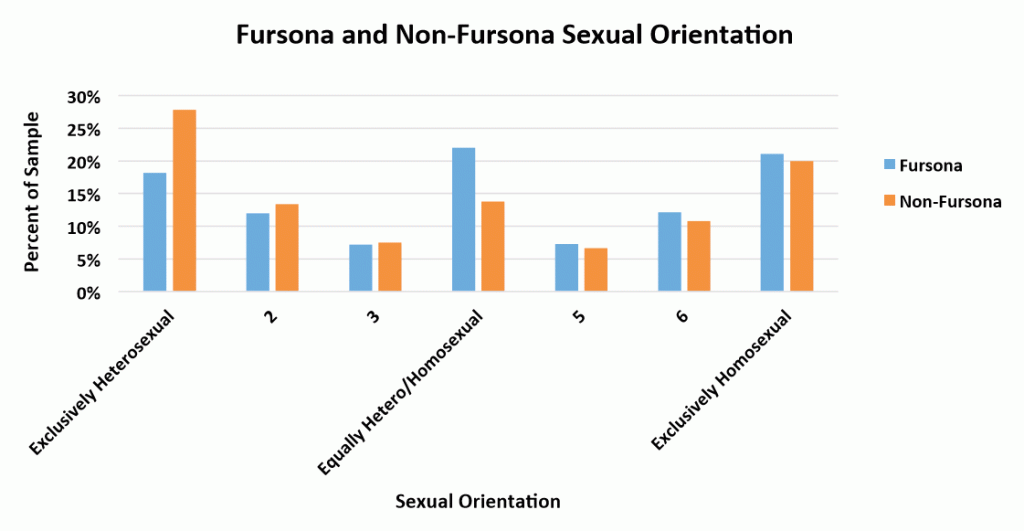Analogous to the way we looked for self-fursona gender differences in section 3.6, we also asked furries to provide not only their own sexual orientation,1 but to indicate the sexual orientation of their fursona as well. For ease of analysis, participants whose data fell onto a traditional Kinsey-style 7-point scale (heterosexual—homosexual) were used. The data are presented in the figure below, with non-fursona data (orange bars) plotted alongside the same furries’ fursona data (blue bars). 2
Looking at the left-most pair of bars (“exclusively heterosexual”), it is apparent that fursonas are significantly less heterosexual than their creators. There is an approximately equal magnitude increase in “equal parts homosexual and heterosexual” responses for fursonas. This suggests that for some furries (particularly heterosexual furries) their fursona is bisexual, which may reflect their own bisexuality. Given that homosexuality is still looked down upon in many regions, it may be the case for at least some of these people, being able to say “I am not gay, my fursona is” is a way to express this aspects of their identity while simultaneously distancing themselves from the stigma it carries. It may also be a way for furries to “test the waters,” experimenting with homosexual feelings or gauging the reception if they were to come out as bisexual themselves. It’s possible that either of these explanations, or neither, may account for these observations, and it remains for future research to test these hypotheses.


Recent Comments